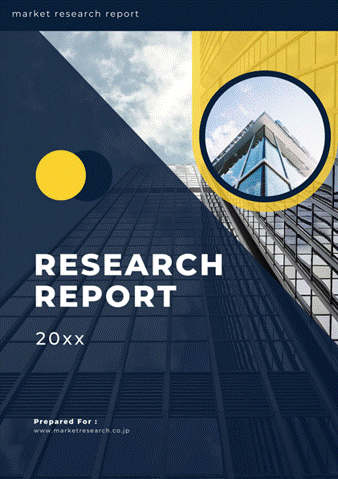 | • レポートコード:MRC2203A443 • 出版社/出版日:Mordor Intelligence / 2022年1月 • レポート形態:英文、PDF、80ページ • 納品方法:Eメール(受注後2-3営業日) • 産業分類:航空宇宙 |
| Single User | ¥703,000 (USD4,750) | ▷ お問い合わせ |
| Site Licence | ¥962,000 (USD6,500) | ▷ お問い合わせ |
| Corporate License | ¥1,295,000 (USD8,750) | ▷ お問い合わせ |
• お支払方法:銀行振込(納品後、ご請求書送付)
レポート概要
| Mordor Intelligence社は、世界の貨物機市場について調査・分析し、イントロダクション、調査手法、エグゼクティブサマリー、市場動向、種類別(専用貨物機、非貨物機)分析、エンジン種類別(ターボプロップ、ターボファン)分析、地域別(北米、ヨーロッパ、アジア太平洋、その他地域)分析、競争状況、市場機会・将来の傾向などの項目を掲載しています。 ・イントロダクション ・調査手法 ・エグゼクティブサマリー ・市場動向 ・世界の貨物機市場規模:種類別(専用貨物機、非貨物機) ・世界の貨物機市場規模:エンジン種類別(ターボプロップ、ターボファン) ・世界の貨物機市場規模:地域別(北米、ヨーロッパ、アジア太平洋、その他地域) ・競争状況(The Boeing Company、Airbus SE、Textron Inc.、...) ・市場機会・将来の傾向 |
The freighter aircraft market is projected to record a CAGR of more than 4.5% during the forecast period.
Key Highlights
- The market demand is primarily driven by factors, such as the rise in new trade relationships among different countries and rapid growth in e-commerce activities across the world.
- According to the IATA, air cargo represents less than 1% of global trade volume (airlines transport more than 52 million metric ton of goods, annually) and more than 35 % of the global trade value (air cargo value is over USD 6.8 trillion, annually).
- The trade conflict between the United States and China and recurring political and financial market instability in some emerging markets are some of the factors that may hamper the growth of air cargo demand, thereby, affecting the freighter aircraft demand during the forecast period.
- Amid the global COVID-19 outbreak, many airlines have been temporarily converting their passenger aircraft into cargo aircraft for transportation of medical equipment and cover up the loss, as air passenger transportation is restricted in many major aviation hubs.
Key Market Trends
Derivative of the Non-cargo Aircraft Segment is Anticipated to Register the Highest CAGR During the Forecast Period
The Derivative of Non-cargo Aircraft segment accounts for more than 60% of the market share, and it is anticipated to register the highest CAGR during the forecast period. This is mainly due to the increasing preference of airlines to replace their old and aging passenger aircraft with freighter aircraft. During such conversions, aircraft are reinforced with floors that can handle the weight of the freight. In addition, changes are made to aircrafts’ fire detection, ventilation, and temperature control systems. This is because freighter aircraft have different requirements than passenger aircraft and must comply with different standards. Some of the available passenger-to-freighter (P2F) aircraft programs are B737, B757, A320, and A321. In February 2020, Elbe Flugzeugwerke, a joint venture of Airbus and ST Engineering, received a supplementary type certificate from the EU Aviation Safety Agency for Airbus A321 passenger-to-freighter conversion. In late 2019, ST Engineering received two new orders for the A321 P2F aircraft conversion from BBAM, a US-based aircraft leasing company. Such orders for new conversions across the world are anticipated to bolster the growth of this segment of the market during the forecast period.
Asia-Pacific Accounted for a Major Market Share in 2019
The Asia-Pacific region accounts for more than 30% of air cargo demand. The increasing demand for air cargo is mainly due to the increasing demand for e-commerce. The growing preference for online shopping and the presence of production facilities of electronics and other commercial goods in countries, like China, India, Japan, Cambodia, and Vietnam, are driving the air cargo market. In order to cater to the growing demand, several airlines in the region have placed orders for freighter aircraft (passenger to cargo conversions). ANA Cargo, Garuda Indonesia, Mongolian Airways Cargo, SpiceJet, and Qantas are some of the major airlines that received freighter aircraft in 2019. Further, with the growing demand for air cargo, the demand for freighter aircraft in the region is anticipated to grow during the forecast period.
Competitive Landscape
The freighter aircraft market is fragmented, with the presence of several players. These players include aircraft OEMs, third-party contractors or independent companies that enter cooperation agreements with OEMs, and third-party contractors that develop their conversion solutions independently. Some of the prominent players in the market are The Boeing Company, Airbus, ATR, and Textron Inc. These players provide freighter aircraft models for their customers. For instance, Boeing received orders for 24 freighter aircraft (12 B767Fs and 12 B777Fs) and 18 freighter aircraft (28 B747Fs and 4 B767Fs) from FedEx and UPS, respectively. The deliveries of the aircraft are scheduled during the forecast period. In addition to this, companies, like Boeing, Singapore Technologies Engineering Ltd, Israel Aerospace Industries Ltd, and Precision Aircraft Solution, are the prominent players in providing conversion services. The fragmentation in the market is set to increase with new players that provide aircraft conversion services entering the market. Recently, in May 2020, Lufthansa Technik announced that it was converting an Airbus A380 to a freight version (temporary conversion) for an undisclosed customer. Similarly, IPR Conversions Ltd and Sabena Technics were selected by Cebu Pacific Air to convert two of its ATR 72-500 aircraft into freighter aircraft.
Additional Benefits:
- The market estimate (ME) sheet in Excel format
- 3 months of analyst support
1 INTRODUCTION
1.1 Study Assumptions
1.2 Scope of the Study
2 RESEARCH METHODOLOGY
3 EXECUTIVE SUMMARY
4 MARKET DYNAMICS
4.1 Market Overview
4.2 Market Drivers
4.3 Market Restraints
4.4 Porter’s Five Forces Analysis
4.4.1 Threat of New Entrants
4.4.2 Bargaining Power of Buyers/Consumers
4.4.3 Bargaining Power of Suppliers
4.4.4 Threat of Substitute Products
4.4.5 Intensity of Competitive Rivalry
5 MARKET SEGMENTATION
5.1 Type
5.1.1 Dedicated Cargo Aircraft
5.1.2 Derivative of Non-Cargo Aircraft
5.2 Engine Type
5.2.1 Turboprop Aircraft
5.2.2 Turbofan Aircraft
5.3 Geography
5.3.1 North America
5.3.1.1 United States
5.3.1.2 Canada
5.3.2 Europe
5.3.2.1 Germany
5.3.2.2 United Kingdom
5.3.2.3 France
5.3.2.4 Russia
5.3.2.5 Rest of Europe
5.3.3 Asia-Pacific
5.3.3.1 China
5.3.3.2 India
5.3.3.3 Japan
5.3.3.4 South Korea
5.3.3.5 Rest of Asia-Pacific
5.3.4 Rest of the World
6 COMPETITIVE LANDSCAPE
6.1 Vendor Market Share
6.2 Company Profiles
6.2.1 The Boeing Company
6.2.2 Airbus SE
6.2.3 Textron Inc.
6.2.4 Aviation Industry Corporation of China
6.2.5 ATR
6.2.6 KF Aerospace
6.2.7 Singapore Technologies Engineering Ltd
6.2.8 Aeronautical Engineers Inc.
6.2.9 Precision Aircraft Solution
6.2.10 Israel Aerospace Industries Ltd
7 MARKET OPPORTUNITIES AND FUTURE TRENDS